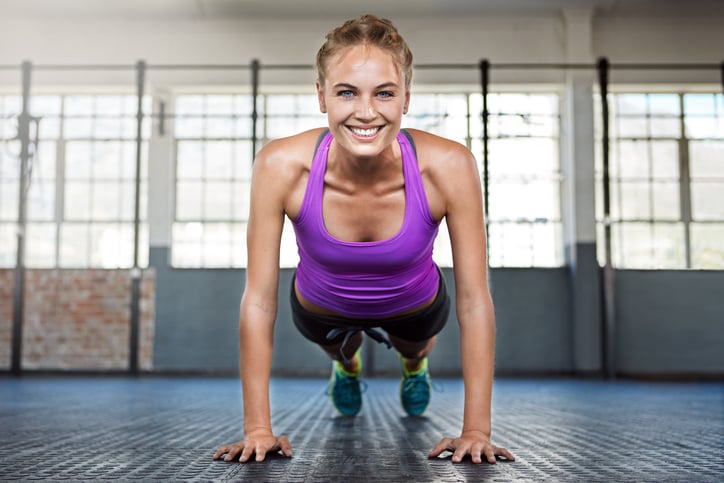What is Functional Movement Training? A Beginner’s Guide

Functional movement training has been called the “it” exercise and the “exercise of the future.” The cool thing about this type of exercise is not only is it “next-gen,” but it’s just as great for the Matures, the Baby Boomer generation, Millennials, and everyone in between.
What Is Functional Movement Training?
Many mainstream workouts consist of movements on machines or through single planes (i.e., isolation exercises). Yet many workouts also include functional exercises, so you may already be doing some functional work without knowing it.
So, what makes functional movement training different from other types of training? With functional training, you train muscles to work with each other, which helps better prepare the body to perform normal daily tasks. The focus is on making common daily movements easier, whereas normal training often revolves around either weight loss or the aesthetic appearance of the body.
Functional movements also employ multiple joints and many muscles at the same time. Whereas more mainstream resistance training can tend to focus on one small muscle group at a time. By mimicking your body’s everyday movements when performing actions like sitting down and getting up out of a chair, twisting and rotating, or bending over and lifting things, you can become better balanced, stronger, and able to function more safely on your own. Functional movement training is also great for strengthening your core and providing you with increased stability.
Why You Need Functional Movement Training
As mentioned, these exercises help you become stronger in the everyday movements you do. So, it’s necessary to replicate the movements you find yourself doing in the following environments:
- Home
- Work
- Sports
Put the “Fun” Back in Functional
So, what now?
Where can you find guidance on functional movement training? Well, it’s available everywhere, including gyms and training facilities that offer classes. Or, if you prefer, you can even do functional workouts at home with body-weight exercises. Whether you choose to go it alone or you decide to have some fun workouts with friends, you’re sure to enjoy your functional training routine, and you’ll love the benefits you’ll garner.
By following a functional training plan, you’ll improve your:
- Balance
- Strength
- Flexibility
- Coordination

Try These Functional Movement Training Exercises:
Here are a few exercises for you to try:
Pushups—you can do these on your knees if you’re not able to perform a conventional pushup. Begin in a plank position with your arms positioned straight below you and about shoulder-width apart. Lower your body by bending your elbows while keeping your back and glutes in a straight line.
Body Squat—you can do these at the gym or at home by just using your own body weight. With your feet about hip-width apart, “sit” back until your thighs are parallel to the floor (do not go down past parallel). Pause briefly and then squeeze your legs and glute muscles to return to a standing position.
Plank with a Twist—start with your forearms and knees on the ground and your hands shoulder-width apart, palms down. Keep your elbows directly beneath your shoulders. Extend your legs straight behind you, resting on your toes. With your torso and legs in a straight line, slowly lift your right hand off the ground, straighten your arm and twist your body until your fingers point up toward the sky. Your feet should naturally twist a bit to the side so you’re resting more on the sides of your feet. Hold this position for 10 seconds and then release, coming back to rest on your knees. Repeat on the opposite side.
Lunge—begin by standing with your hands on your hips and your feet hip-width apart. Lift your right leg and take a large step forward, landing on your heel, not your toes. Bend both legs until your front thigh is parallel with the ground. Pause briefly and then push through the heel of your front leg to bring your body back into a standing position. Do not allow your front knee to bend further than 90 degrees during the movement or to push past the toes.
Pulldowns—doing a pulldown-type exercise is a great way to strengthen your back which is involved in many movements you make. This is the one exercise that will most likely need to be performed at a fitness facility. Begin by sitting on a pulldown machine, facing forward. Reach up and grab the overhead bar with both hands, palms facing forward. Sit up straight and pull the bar down toward your chest while “trying to touch your elbows behind your back.” Hold the flexed position for a few moments and then slowly, in a controlled manner, return the bar to the start position. Repeat.
For Flexibility—Yoga should be your go-to routine for flexibility and added balance. Not only is it refreshing and a great stress-reducing exercise, but learning to connect with your body will help you get even more benefits from your functional training.
Don’t forget, as you get older, if nothing else, it’s essential you get some sort of functional training into your exercise routine if you want to be self-sufficient, strong, and able, long-term.






